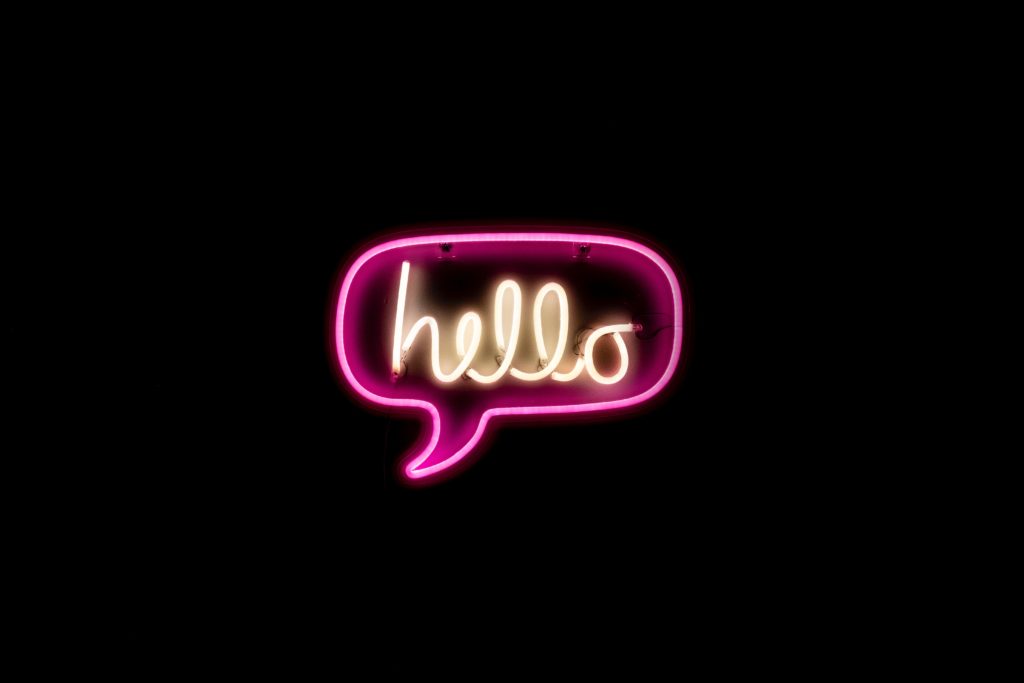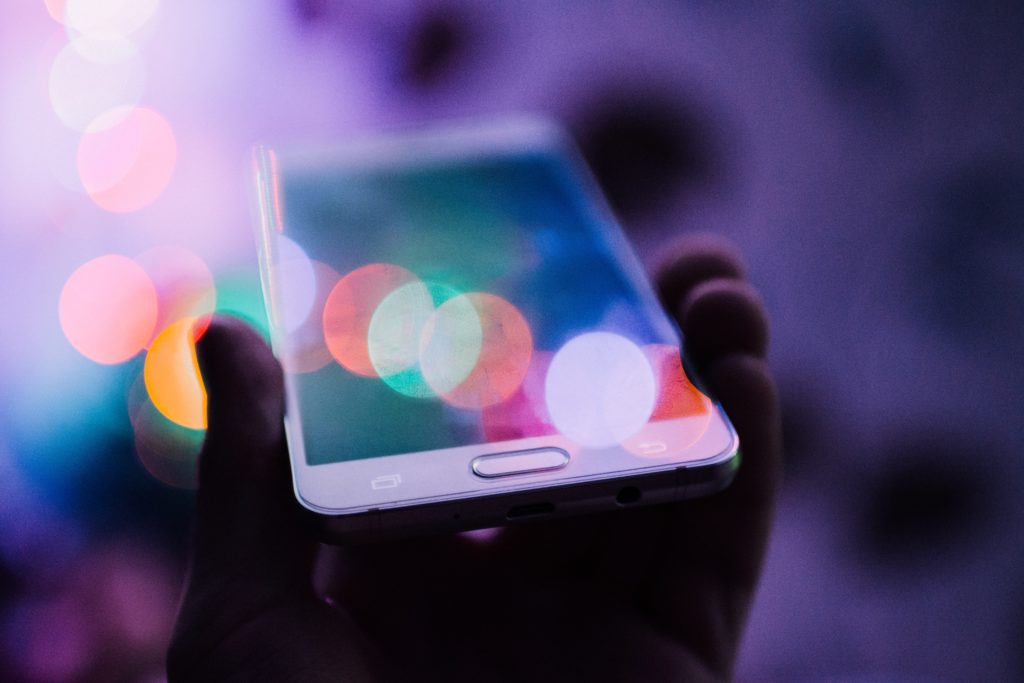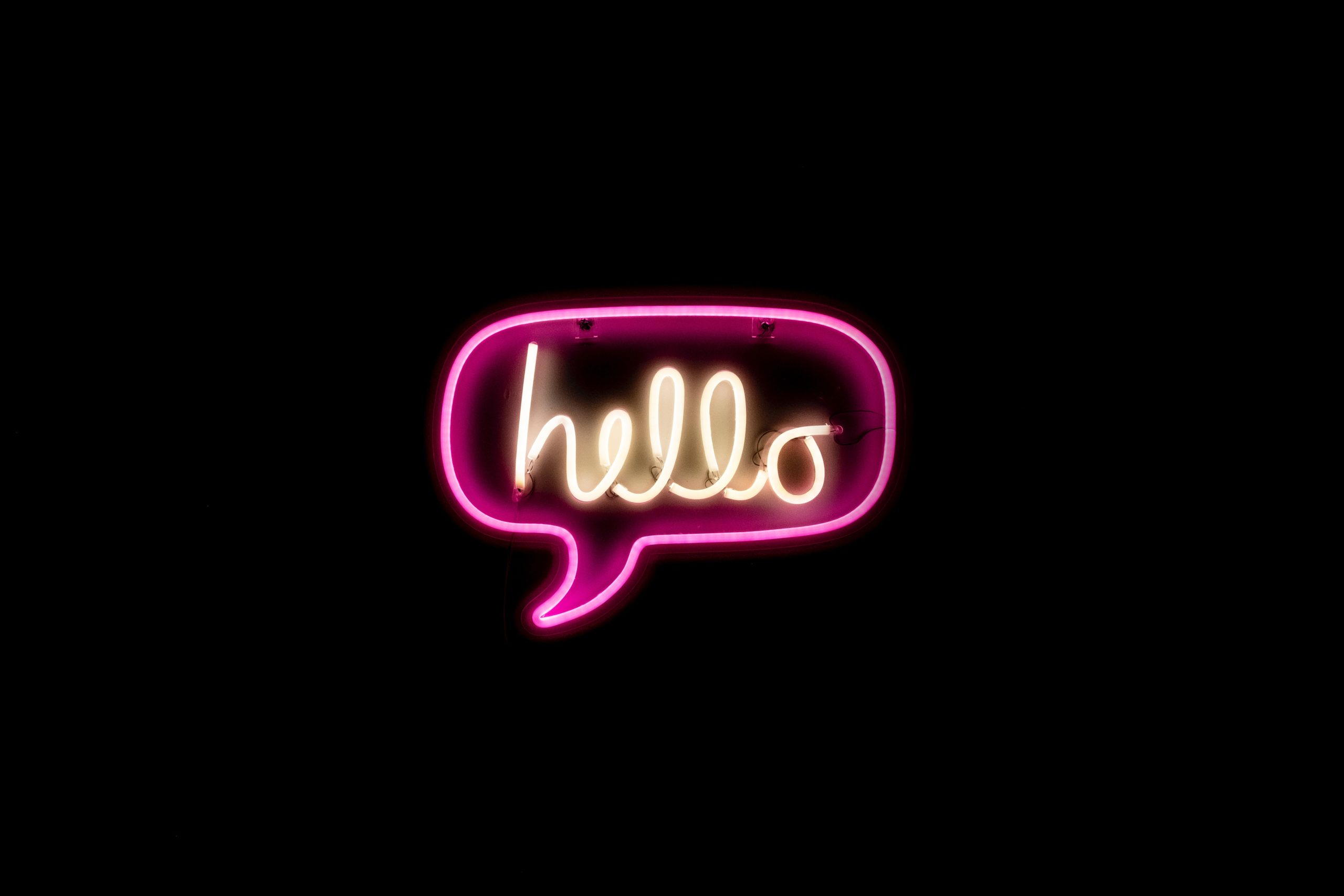You should make them work with you, not against you. Smartphones are a wonderful advancement in technology and allow for information and communication to be faster than ever before. As with any advancement, we need to pay attention to our habits around this technology. Smartphones are designed to be attractive and fun, but they can be habit-forming as well.
They are designed to be attractive and hold our interest, keeping us on them for hours at a time. However, there are ways to make them less attractive and addictive. Technology should help us achieve our goals, not derail our healthy habits.
There are endless articles about how smartphones are allegedly ruining our attention spans, ability to communicate, and training us to passively absorb information instead of actively interacting to learn it. There is some truth to those arguments. However, fighting technology may not be the wisest approach. Instead, I advocate for finding ways to use technology to help you achieve your goals. By using apps, limits, and a combination of tech and non-tech options, you and I can keep technology a healthy, positive area of our lives, instead of one we regret.
We are only now entering our second decade with this technology and like anything else, it will become more normal and less frenzied. In the near future, I think we will adjust to our smartphones in a similar way to how we’ve accommodated radio and television. We use them for entertainment or learning, as they benefit us, and make them fit our lifestyle.

Why your phone stresses you out
The smart phone was created to streamline your entertainment experience. As Steve Jobs said when he introduced it, the iPhone was simply a phone which played music. That was the great innovation; combining communication and entertainment on the go. However, the creation of the iPhone coincided with social media platforms taking off. As websites like Facebook became more popular, the idea of bringing the social media platforms onto the phone made perfect sense.
First, the social media platforms were brought onto the smart-phone. Next, Facebook introduced the concept of “likes,” bringing about the attention economy and forever changing the internet landscape. Thirdly, the concept of notifications came along. These three developments have enabled the rise of compulsive smartphone use.
The “attention economy” refers to the online world revolving around advertising. In the past, advertisers bought space in newspapers and magazines to sell products to their target audience. Now that these media, and their customers have moved online, the advertisers are following. Sometimes they do this quite literally, with tracking cookies and targeted advertisements. Other times, it is simply a barrage of ads based on the webpage or company themselves. Either way, companies are looking to sell more product at less cost to themselves. Where currency was formerly measured purely in money, now the amount of time spent on a webpage is measured. In other words, advertisers want your attention.
A habit loop
The likes and notifications are what allowed the big business of social media to take off. Likes, attention and interaction have skyrocketed social media platforms into the multi-billion dollar businesses that they are. Taking cues from psychology, programmers know that when we see a notification, we have just a few seconds in which to decide whether to act or not – whether to see who posted what or not. The smartphone has simply made this process friction-free and nearly instantaneous.
Smartphones and social media come together to play into the human enjoyment of novelty and reward. They create a habit loop, which looks something like this:
When we get a like, or a text in response, our brains release a neurotransmitter called dopamine. This chemical is responsible for the pleasure feeling we get from things like eating our favorite foods, seeing our loved ones, and, yes, receiving a like on a photo we’ve posted. For the user posting said photo, the process starts with the initial nervousness in putting up something new, then the anticipation in the moments after, followed by the slew of likes or comments, releasing dopamine. Then, every time we respond to a comment or receive another like, this happy feeling is reinforced, teaching our brains to repeat this pattern of behavior. This feedback loop, also called operant conditioning, creates a new pattern of behavior and expectation.
- Cue (notification bell)
- Craving (desire to see the text)
- Response (click back into the platform or app)
- Reward (the flood of dopamine and enjoyment of the text, attention, etc.)
I don’t think blaming the inventors and companies behind these phones for making their product enjoyable is any more reasonable than blaming bakeries for making delicious pastries. Of course their product is desirable. That’s the point. We simply need to adjust our expectations and intake of these things.
How phones can hijack will-power
As we’ve touched on previously, we only have so much attention and decision-making energy. By the end of the day, we’ve exhausted our ability to make wise decisions, and our willingness to execute them. It’s why Netflix binges happen at night. It’s why diets go off the rails at the end of the day. It is also the reason so many of us scroll through social media just to see what is going on or to pass a few minutes before bed. Our willpower has been exhausted. Then suddenly, an hour has flown by; we feel robbed of our time and we’re late getting to bed.

Additionally, research indicates that the mere presence of your phone splits your attention and can contribute to this “brain drain” of willpower. The knowledge of a missed message or call amplifies this distractedness.
What makes our phones so simple to use during the day is also what can thwart our best intentions when attention and will-power are scarce. For this reason, we need to thoughtfully consider how and when we use our phones.
Reduce the influence of the smartphone
Knowing that smartphone usage is a malleable habit which you can form goes a long way to helping you change how you use it. Rather than trying to decide what to scroll through and when, the smarter approach is to have limits in place before you even pick up the phone. These steps only take a few minutes, but will give you back hours of focus and time.
- Track the amount of time you spend on your phone and which apps you frequent.
Our phones now keep track of this automatically; here is a resource for finding it on your iPhone or Android. - Use the time and app limits your phone provides.
Now that we know how much time we spend on these platforms, we can decide what to do with it and set limits to reduce or automate it. Even if you aren’t trying to reduce the amount of time you use on an app, setting a limit can keep you on track and prevent you from checking email for hours or getting lost in an endless Twitter thread. You can also set your phone to turn off apps at a certain time. - Turn off notifications.
Breaking news, email, social media notifications, blurbs about who is buying or selling whatever; anything you don’t want to be informed of in real time can be turned off. - Plan specific times to be on your phone.
This can give you the opportunity to choose a higher quality source of entertainment, knowledge, or simply allow you to get to bed on time. Setting aside time for phones or other devices allows you to enjoy your time there, and still get other things done. I wait until lunch to check my phone or email, and get back on my phone after dinner at the end of the day. I also have time limits in place, and the app shuts down upon reaching that limit.
Do Not Disturb
Every time our phones chirp, they break our concentration. When we are interrupted in a task, it takes an average of twenty-three minutes to regain focus. Dr. Gloria Mark, who studies distraction, also found increased stress levels in office workers who were frequently interrupted. This means that interruptions from smartphones can cost us hours of quality time with our work or families, and stresses us out. We must find ways to minimize these distractions in the interest of choosing where our time and focus goes.
The single most effective change I’ve made to my smartphone has been to leave it in Do Not Disturb mode 90% of the time. This means that all notifications are silenced, but still available to be checked at a time you choose. There is an option to let in calls from certain numbers, if you need to take a call or not miss someone’s text.
You can also set Do Not Disturb for certain times each day, like overnight or during your working hours. This setting has allowed me to focus entirely on writing during the day. The mental clarity and relief of knowing I will not be interrupted is unparalleled.
Here is a walk-through of how to set it on iPhone and one for Android.

Colors, sounds, and reinforcement
Have you ever considered why apps and notification badges are so brightly colored? The saturated colors make our phones look like a candy-coated game. Which is the point; they’re designed to be fun to use and look at.
The red notification button is no accident. The color red denotes stop signs, emergency vehicles, blood, and danger. We bring those prejudices to our phones. Having that conspicuous red notification button is meant to get your attention, and get you to check the app.
By putting your phone into grayscale, you flatten this affect. You reduce the attractiveness of the phone itself, because the bright colors and photos aren’t nearly as compelling as their colorful counterparts. Being a very visually driven person, this change has been the biggest catalyst for me in the shift away from picking up my phone randomly.
For iPhone users, go to Settings -> Accessibility -> Display Accommodations -> Color Filters.
On Android, find “Vision”, then scroll down to “Grayscale.”
For the past year, I’ve kept my phone in do not disturb, set time limits on apps, and limited my phone use to certain times of the day. These changes, along with removing unused apps and keeping the screen in black and white mode most of the time, have helped me to dramatically reduce the amount of time I spend on my phone. Instead of scrolling mindlessly for hours, I use that time to read, write, and spend time with loved ones. I get more done and I’m happier.
I’ve listed a few changes which have made a major difference in my daily phone use and ability to concentrate. There are also hundreds of resources gathered online to help you find additional ways to make your phone work for you. This list has over 100 hacks, changes, and tweaks you can use to make your phone less addictive and more of an aid to your goals, with a table of contents for easier navigation.
Seven additional changes to make:
- Keep phones and devices out of the bedroom
- Change your background to something bland
- Delete apps you don’t use
- Keep your phone in your bag while driving
- Wear a watch instead of checking your phone
- Don’t use your phone in bed
- Organize your apps into folders based on their purpose, like, Games, Learning, Productivity, Social

Stress and sleep
Stress can cause sleep disturbances and even bring about insomnia. This can affect sleep in teens and adults alike. At the same time, insomnia can elevate stress levels.
One study has even associated the rise of anxiety in teenagers with smartphone and social media usage. While it is too early to definitively say one causes the other, or that some unknown factor causes both, the correlation here should make us take a moment to think about how our phones may affect our health.
Restricting phone usage can benefit us by reducing the opportunity for anxiety and stress to develop. As mentioned above, setting your phone to do not disturb overnight also ensures your phone doesn’t wake you. I’ve found keeping my phone out of the bedroom has drastically improved my sleep since implementing that change three years ago.
Another consideration is leaving your phone in another room while working or studying, as we’ve seen the phone itself can distract us.
“AMAZING BREAKTHROUGH! Scientists have discovered a revolutionary new treatment that makes you live longer. It enhances your memory and makes you more creative. It makes you look more attractive. It keeps you slim and lowers food cravings. It protects you from cancer and dementia. It wards off colds and the flu. It lowers your risk of heart attacks and stroke, not to mention diabetes. You’ll even feel happier, less depressed, and less anxious. Are you interested?”
Dr. Matthew Walker, Why We Sleep
Sleep and phone use
Every twenty-four hours, our bodies naturally wind down in a sleep-wake cycle. Levels of the hormone melatonin begin to rise in the evening after sunset. They remain elevated through the night, and fade in the morning after the sun rises. For most of history, we rose and retired with the sun, but the invention of the light bulb has forever changed how we sleep. Compounding the problem, we also have devices available to us around the clock. The blue light in televisions, tablets, and phones keeps our minds awake, and delays sleep onset.
Now that our bodies and brains are bathed in artificial light most of the day, our sleep onset time continues to get pushed back. It’s become a habit to not compensate for that lost sleep, unless it’s a weekend, of course. Most of the time, though, we simply go without the valuable sleep we need, forgoing key building of our immune systems and memories. We miss out on physical rebuilding of our muscles, optimal times for cementing knowledge, and the anxiety relieving properties of sleep. We put ourselves at risk of a host of diseases, including obesity, heart disease, and certain cancers. The CDC even declared this current state of the under-slept public as an epidemic.
We should also be smart about when and how long we use our screens. Dr. Matthew Walker with the National Sleep Foundation says that the light from these devices has a cumulative effect, observing that for every half-hour we spend looking at an iPad or phone screen, our sleep onset gets pushed back two hours. So, you might think you’re winding down reading Pride and Prejudice on your tablet just before bed, when, alarmingly, you may actually be keeping yourself awake! Paper books still seem to be superior, for their lack of back-lighting, and the physical feedback we get from them, like the touch and sound of turning pages. An e-reader or tablet with night-mode enabled is also a way to reduce the amount of light you receive at night.
Conclusion
The most important aspect about a piece of technology is making sure it fits into your goals and lifestyle, rather than upending both. Until we know more about how our phones are affecting our health and habits, we should exercise caution and thoughtfully consider the ways we use this technology. Consider taking a look at your smartphone habits and reflecting on whether they line up with where you want to be spending your time.




